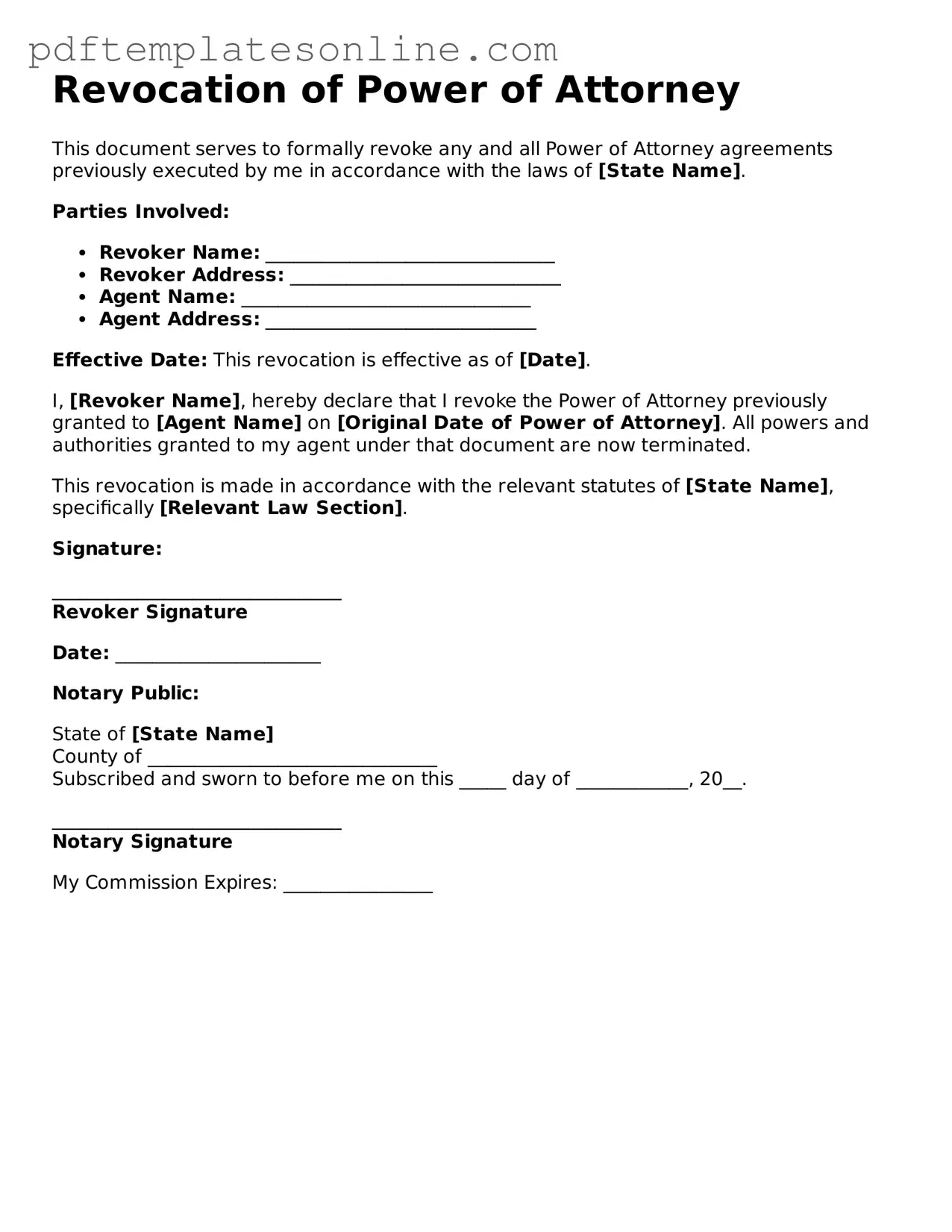Fillable Revocation of Power of Attorney Document
The Revocation of Power of Attorney form is a legal document used to cancel or invalidate a previously granted power of attorney. This form is essential for individuals who wish to terminate the authority given to an agent or attorney-in-fact. Understanding how to properly execute this form can help ensure that your wishes are respected and that your affairs are managed according to your current preferences.
Access Revocation of Power of Attorney Editor Now
